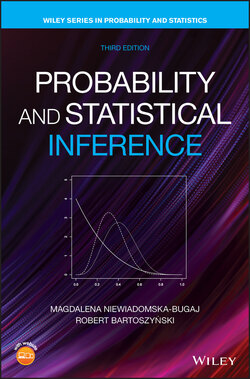Читать книгу Probability and Statistical Inference - Robert Bartoszynski - Страница 14
Chapter 1 Experiments, Sample Spaces, and Events 1.1 Introduction
ОглавлениеThe consequences of making a decision today often depend on what will happen in the future, at least on the future that is relevant to the decision. The main purpose of using statistical methods is to help in making better decisions under uncertainty.
Judging from the failures of weather forecasts, to more spectacular prediction failures, such as bankruptcies of large companies and stock market crashes, it would appear that statistical methods do not perform very well. However, with a possible exception of weather forecasting, these examples are, at best, only partially statistical predictions. Moreover, failures tend to be better remembered than successes. Whatever the case, statistical methods are at present, and are likely to remain indefinitely, our best and most reliable prediction tools.
To make decisions under uncertainty, one usually needs to collect some data. Data may come from past experiences and observations, or may result from some controlled processes, such as laboratory or field experiments. The data are then used to hypothesize about the laws (often called mechanisms) that govern the fragment of reality of interest. In our book, we are interested in laws expressed in probabilistic terms: They specify directly, or allow us to compute, the chances of some events to occur. Knowledge of these chances is, in most cases, the best one can get with regard to prediction and decisions.
Probability theory is a domain of pure mathematics and as such, it has its own conceptual structure. To enable a variety of applications (typically comprising of all areas of human endeavor, ranging from biological, medical, social and physical sciences, to engineering, humanities, business, etc.), such structure must be kept on an abstract level. An application of probability to the particular situation analyzed requires a number of initial steps in which the elements of the real situation are interpreted as abstract concepts of probability theory. Such interpretation is often referred to as building a probabilistic model of the situation at hand. How well this is done is crucial to the success of application.
One of the main concepts here is that of an experiment—a term used in a broad sense. It means any process that generates data which is influenced, at least in part, by chance.
